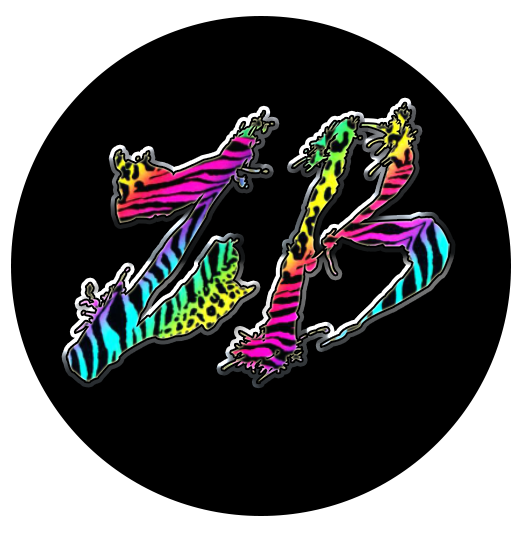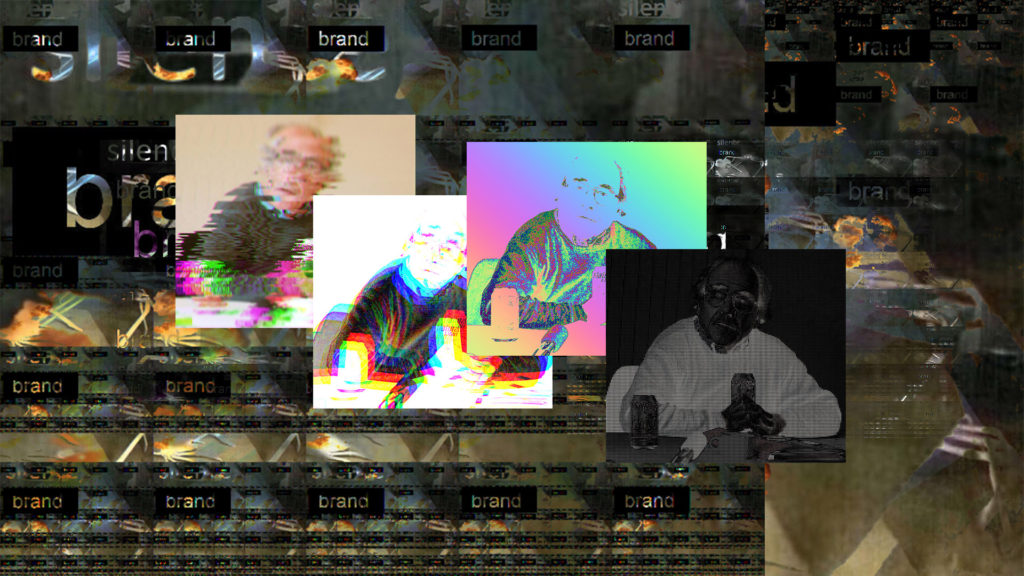It is with a heavy heart that I must announce that the brands are at it again. I had an interesting and illuminating interaction with one of these out of pocket brands recently: Natural Light. That’s right, Natty Light, the chosen trash beer of college freshman. Guaranteed to give you beer shits and send you puking into a urinal. The brands have decided to stake their plot firmly in the Meme Zone, and then this happened:
Here's the thing: we all know what you're doing. You're trying to be very self-aware "fellow kids", be in on the joke.
— Voodoo Pork (@Voodoo_Pork) November 6, 2019
But you, the person running this account, you're a person pretending to be a brand pretending to be a person. That hyperreal enough for you? pic.twitter.com/qddFWinQQY
Banana Duct-Taped To Wall
The image is of Jean Baudrillard, a mid-century philosopher who regularly gets grouped in with “postmodernism”, even though he never formally described himself as such. If you’re not familiar with him, imagine he’s the guy you think wrote the Matrix movies, but in fact those movies were written by people who didn’t quite get Baudrillard. His most famous work Simulacra and Simulation described the condition called “hyperreality”: the inability to differentiate the simulation of reality from the real thing.
He also detailed an additional, critical concept that desperately needs to be grafted onto Marx’s economic analysis: sign value. A “sign” is an outward projection of social status given to an object or idea. It is the value an object has that is only tangentially related to its monetary value, although sign value can and does result in a higher monetary value. It is both material and immaterial simultaneously and drives most modern commerce.
He uses the concept of the art exhibition. Let’s look at “Comedian” or the “banana duct taped to a wall“. Insipid and irony-soaked yes, but why is this “worth” $120,000? It has no tangible value, but its market value is $120,000. Why? Because it has immense sign value as “art” even if not purchased, making its exchange value partially irrelevant. I also approve of the fact a guy ate it and turned that into art. Fuck it, get your potassium any way you can. Funny enough, Baudrillard talked about how the sign value of something is chiefly expressed when consumed, but I doubt he meant it this literally.
Sign value can be completely unrelated to market value. Take the sign value of the images of Jesus Christ or Mao Tse-Tung or the American flag, for example. They have enormous value to people, and that value is outside of any monetary stamp you put on them. Even the act of eating the stupid-ass joke art banana is an act of importance with great sign value in itself.
It’s hard for us in 2019 to imagine the context in which Marx wrote Das Kapital; the mid-19th century near the ass-end of the Industrial Revolution. Marx imagined class relations in its most abstract terms, the factory owner with a tweed coat chomping a cigar and the factory worker shoveling something, coal probably, sweating and muscles gleaming like on the cover of a romance novel. Okay, maybe not, but you get the point: Marx lived in a society.
It’s equally as hard to imagine Marx writing a 177 page chapter on something as alien to him as “internet clout”, but it’s not impossible. Marx had a forward-thinking idea of automation and the impulse behind greed as a social force, even if limited to the fatcat-hardhat dynamic. It’s something I’m confident a 2019 Marx would tackle, but in 1867 it would be like Noam Chomsky writing about quantum brain computers in the 22nd century.
Even the modern imagination of the “working class” is obnoxiously limited to chubby white guys in stained white t-shirts who work at the Racism Factory. This extremely narrow depiction ignores not just demographics, but types of work which need their own new vocabulary that Marx simply didn’t have.
We poke fun at the hardhat cliche, yet when even socialists discuss Marx and his ideas, we are equally limiting ourselves to that depiction, albeit subconsciously. (Who calls themselves a “worker” now, anyways?)
The fundamental drive behind all capitalism, wealth accumulation, has been augmented with other vital drives. Consider these things side quests to the main storyline of owning everything on Earth.
So why is sign value so important?
Here’s Your Sign (Value)
Sign value is the fundamental, most central way that we communicate value in this new modern economy. Everything is about brand, even down to the ways we communicate through social media. When we consume a brand (or banana art), we don’t just consume the thing, but also a lifestyle the thing has come to represent. An entire system of signifiers become part of consumption. We present a version to the world, for better or worse, that is a symbolic representation of who we are and what we have consumed. Social currency is presented as clout, followers, influence which can be totally disconnected from any sort of monetary value. In fact, a company may take a pass on a lucrative opportunity to preserve its brand value. I would argue that the only way a company can truly be punished is to have a devaluation of its brand by bad publicity, changes in public opinion, etc.
This disconnection and personification of the brand is one of the most toxic and destructive social thought viruses that currently exist. Corporations are not people and to imbue them with human attributes, such a religious preference or criminal liability, makes them more human than human. They are immortal fictional entities with vast powers. We think of these companies as having emotions, such as “caring” or “concern”. They are even granted religious exemptions, as if a corporation can go to a metaphysical hell.
Information is filtered through these brands, abstracted to the point of meaninglessness. Talking heads create content for no one. The media construction of something is the same as its “real” form because we do not experience the world at large save through media depictions of it. It’s a hologram. Nothing feels real because it is represented only as signs, brands, depictions of reality that conflict and overlap, in ever-increasing speeds.
Let’s take the popular depiction of Santa done by Coke. A popular myth is that Coke created the image of the modern Santa: red coat, bushy beard, the works. But they really didn’t, but it makes them look more powerful if people think they did. The false story has more power than the truth, and so powerful in fact it’s difficult to separate the image of Santa from Coke’s image of him, regardless of what they say. Coke and Santa at Christmas time are joined at the hip.
Now let’s look at the Uberconomy: precarious gig jobs for companies valued in the billions who create nothing, innovate nothing, and own only IP. They’ve so decentralized their own existence their traditional means of production, a car, a room to rent, a delivery service, has been supplied not by a capitalist class running a factory bought with the results of surplus labor, but by you. With your own goddamn money!
Thousands of people have been successfully tricked into converting their own personal property into fixed capital for someone else for poverty wages. Your economy must be as fragile as sugar glass for this to seem like a viable option for people. How else could this be possible without a massive investment not in technology or commodities, but rather in the brand value of that company, its persona, its projected status?
There is no factory owner in this scenario, no cigar or monocle, but a system of phantom companies “worth” billions in stock value, which is not the exact same as cash value. The overvaluation and subsequent plummeting “value” of WeWork is a textbook example of brand superseding value that is more tangible. This is the way our economy seems to work now: a house of cards built on a shaky table.
The Desserts of the Real™
This is an aimless, abandoned country where no one seems to be in charge. Those that claim to be authority seem half-asleep, confused. A type of boring anarchy where we’re all just tumbling bingo balls, and if we get picked, we end up rich, viral, or shot by the police.
A directionless empire with no center, where lots of things happen all the time, yet every channel is static. Every post is a .jpeg that won’t load, a context-less video on mute. Our phones are slipping out of our hands, being wedged in car seats, and us slowly lose our minds attempting to find them because our life is in there.
The most powerful cultural forces right now are Marvel and Star Wars films, which are neither about the past or the future. We are paralyzed by the sheer amount of choice. People are trapped in a cycle of nostalgia. Media is increasingly both centralized and fractured: monopolized in megacorps like Disney or splintered off into tiny individual creators who find it impossible to monetize their craft. We don’t own anything anymore, we license it, which can be taken away at any time. This is the “renter’s society” of part time work, gig jobs, streaming licensed media, communicating through digital, privatized platforms is doing quite dangerous things to us. All while harvesting intangible data harvesting with our passing, disinterested “consent”.
We’re going to become a people that not only don’t make meaningful connections with things, but can’t. If we can’t break this spell, we’ll be doomed to self-branding, self-marketing netherworld of aimless discontent, which economic and cultural fascism will exploit.
Marx predicted the consumer economy, but not this. We need an expanded vocabulary and ways to describe this insanity, and the concept of sign value is just that. Time to bring Baudrillard, that long outcast exile, formally into the fold.
Carl Wilhoyte is the co-editor and co-founder of Zero Balance. His work has appeared in Street Fight Radio, District Sentinel, Abomination Magazine, Bourbon Penn, and Farmhouse Magazine.

